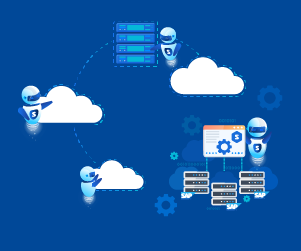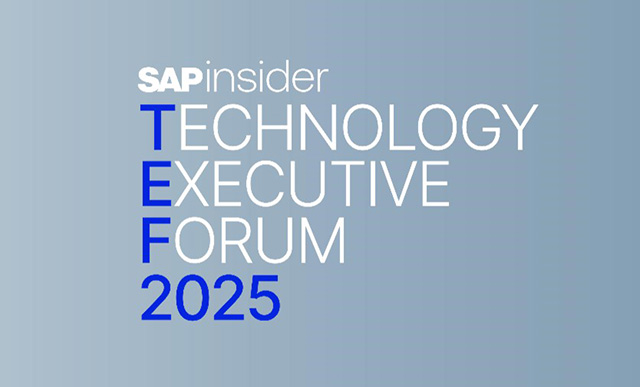The New Growth Engine: An F&B Leader’s Guide to SAP Transformation
Meet the Authors
Key Takeaways
Adopt a pragmatic, phased approach for SAP system transformation that aligns with the company's specific culture, strategy, and resources, avoiding a rushed 'big bang' implementation.
Recognize that successful migration is a people-centric initiative; invest in robust change management and create a clear empowerment framework for employees to enhance ownership and adoption.
Establish a strong data foundation to enable effective AI utilization, positioning the transition to SAP S/4HANA as essential for unlocking advanced analytics and ensuring competitive advantage.
A modern SAP system is the essential foundation for agility and data-driven decision-making in organizations across the Food & Beverage (F&B) and Consumer Packaged Goods (CPG) sectors. However, the question is How do these companies transform their SAP core into a high-performance engine for aggressive growth? More importantly, how do they bring the people across the organization to invest in this journey?
In the first part of our interview, Ron Gilson, Executive Advisor and Principal at NTT DATA Business Solutions, outlined the stark reality of why legacy ERP systems in the F&B and CPG sectors have passed their sell-by date. In the final part, he explains the practicalities of scaling, the vital nature of the human element, and explores the AI frontier in these industries.
Building a High-Performance Growth Engine
A dedicated effort to rapid growth requires commitment to the underlying capabilities that enable it. However, no F&B company has the luxury of doing everything at once. Therefore, the key is to adopt a pragmatic and tailored approach.
Explore related questions
Gilson states, “We meet customers where they are in their journey as we realize every customer journey will be different with different constraints.” This entails providing practical advice informed by a comprehensive understanding of industry best practices, SAP technology, and the organization’s distinct business context. “It’s about creating a roadmap that aligns with the company’s specific culture, strategy, risk tolerance, and investment appetite,” he explains.
The Crucial Lesson
However, organizations must take cognizance of the fact that migration is essentially a people project, not a tech project. This is the most important takeaway for any leader embarking on a transformation. As Gilson points out: “At the end of the day, these are people projects – and how well people and the organization adopt [this] change will be the determining success factor.”
Technology is rarely the actual bottleneck. Success hinges on building trust and confidence across the organization, which requires visible, engaged executive leadership and genuine employee empowerment. According to Gilson, empowerment requires being explicit on the five components listed below. True empowerment of employees and project team members transforms fear into ownership, gets employee buy-in, and accelerates adoption:
- Responsibility: What am I accountable for?
- Accountability: How is success measured?
- Authority: What decisions can I make?
- Autonomy: How much freedom do I have to achieve results?
- Support: Do you have my back?
The Smart Shelf
With a solid SAP foundation providing clean, harmonized data, F&B organizations can unlock the power of AI, which thrives on high-quality data to make operations faster, more intelligent, and more predictive. “There are a plethora of use cases where AI can improve an organization’s supply chain performance,” Gilson notes, adding that AI offers real-time insights, predictive analytics, and automation, making it an invaluable asset. Here are some use cases for AI specifically for the supply chain of CPG companies:
Data quality and enhanced decision making
Supply chains rely on data from multiple sources, and the volume of this data can be overwhelming. AI can significantly enhance data quality when acquiring, cleansing, harmonizing, and managing large datasets. Natural language query and AI-enabled analytics shortens the time to insight and make analytics available to a much larger community. Embedding AI-enabled analytics and recommendations into transactional systems can also provide significant gains in productivity and decision quality.
Demand forecasting
AI-driven demand forecasting helps companies anticipate market changes and adjust their operations accordingly. It reduces the risk of stockouts and overstocks, as well as inefficient production, and lowers increased warehousing and transportation costs.
Inventory optimization
AI tools help balance inventory levels across the extended supply chain to meet service-level goals. As basic safety stock and Just-in-Time (JIT) inventory practices can no longer meet the needs of a complex supply chain, practical cost-effective solutions are required.
Supplier performance
Organizations can rapidly analyze the performance and cost of suppliers across the extended supply chain by utilizing AI tools.
Transportation and logistics optimization
AI tools can optimize transportation and logistics costs as the number of suppliers, products, locations, and carriers increases. This reduces the fines and penalties, as CPG customers looking to optimize their warehousing and logistics operations continually increase their requirements on CPG manufacturers and shippers.
Automation
Robotic Process Automation (RPA) and other automation solutions can be enhanced or augmented with AI to increase benefits like speed, throughput, cost, and quality.
Quality control and compliance
Advances in AI can help organizations identify quality or compliance issues throughout the supply chain. Early identification of quality issues can enhance productivity, reduce costs, and improve customer satisfaction.
What This Means for SAPinsiders
Adopt a pragmatic, phased approach. Gilson states that every organization has different starting and ending points. This is an essential factor for SAPinsiders to consider as they undertake their migration journey. Resist the temptation of the big bang approach and work with a partner like NTT DATA Business Solutions, who meets you where you are and considers factors such as culture and values, enterprise strategy and priorities, risk tolerance, investment appetite, and internal skills, resources, and competencies to build a realistic, value-based roadmap.
Champion the Human Element: A migration project’s success is less about the technology and more about the people. Invest heavily in change management, communication, and a clear empowerment framework that includes responsibility, accountability, authority, autonomy, and support.
Treat your data foundation as the key to AI. You cannot have effective AI without high-quality, harmonized data. Position the move to SAP S/4HANA not just as an ERP upgrade, but as the essential prerequisite for unlocking the advanced analytics and machine learning capabilities that will define the next generation of F&B leaders.






